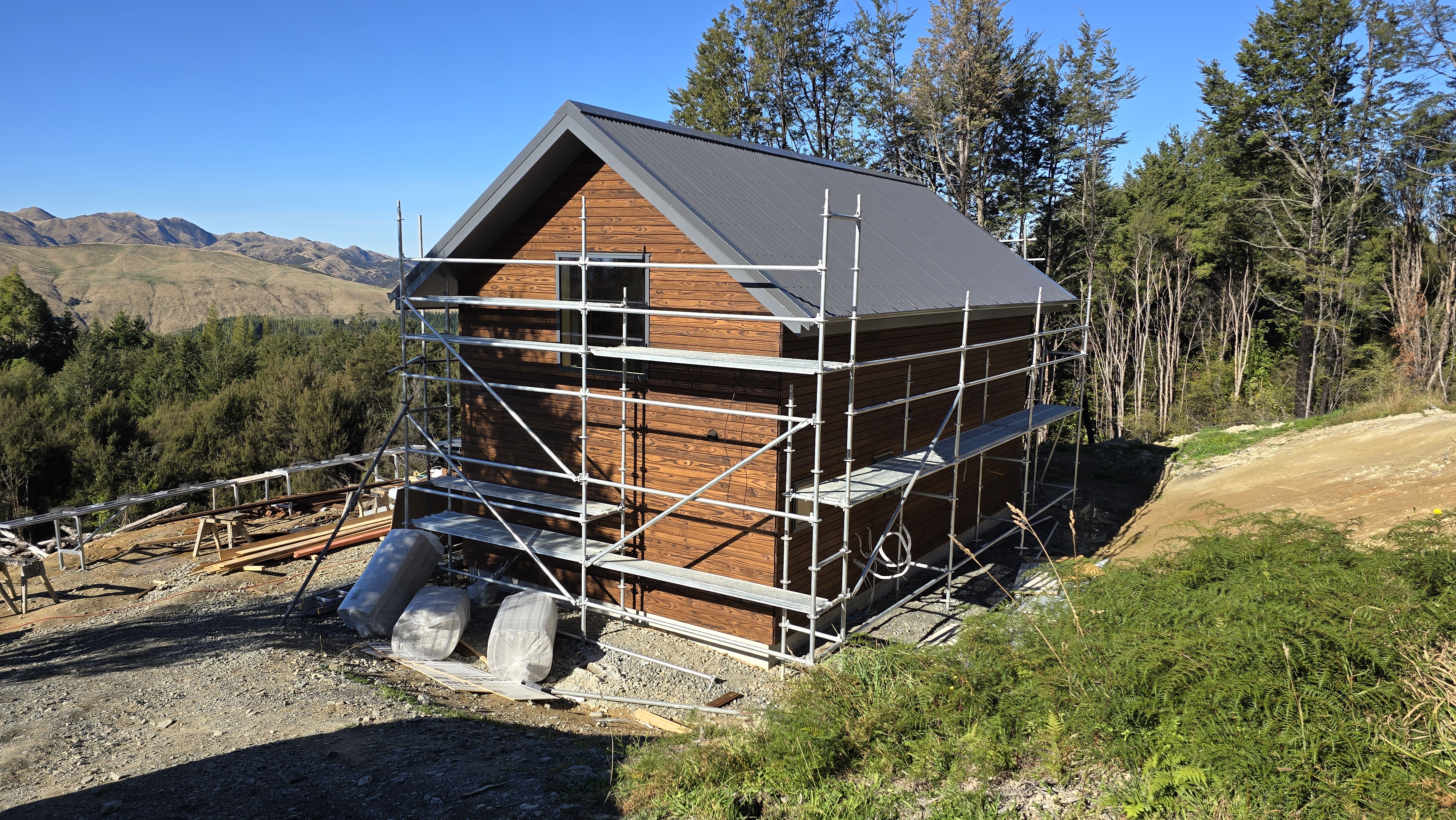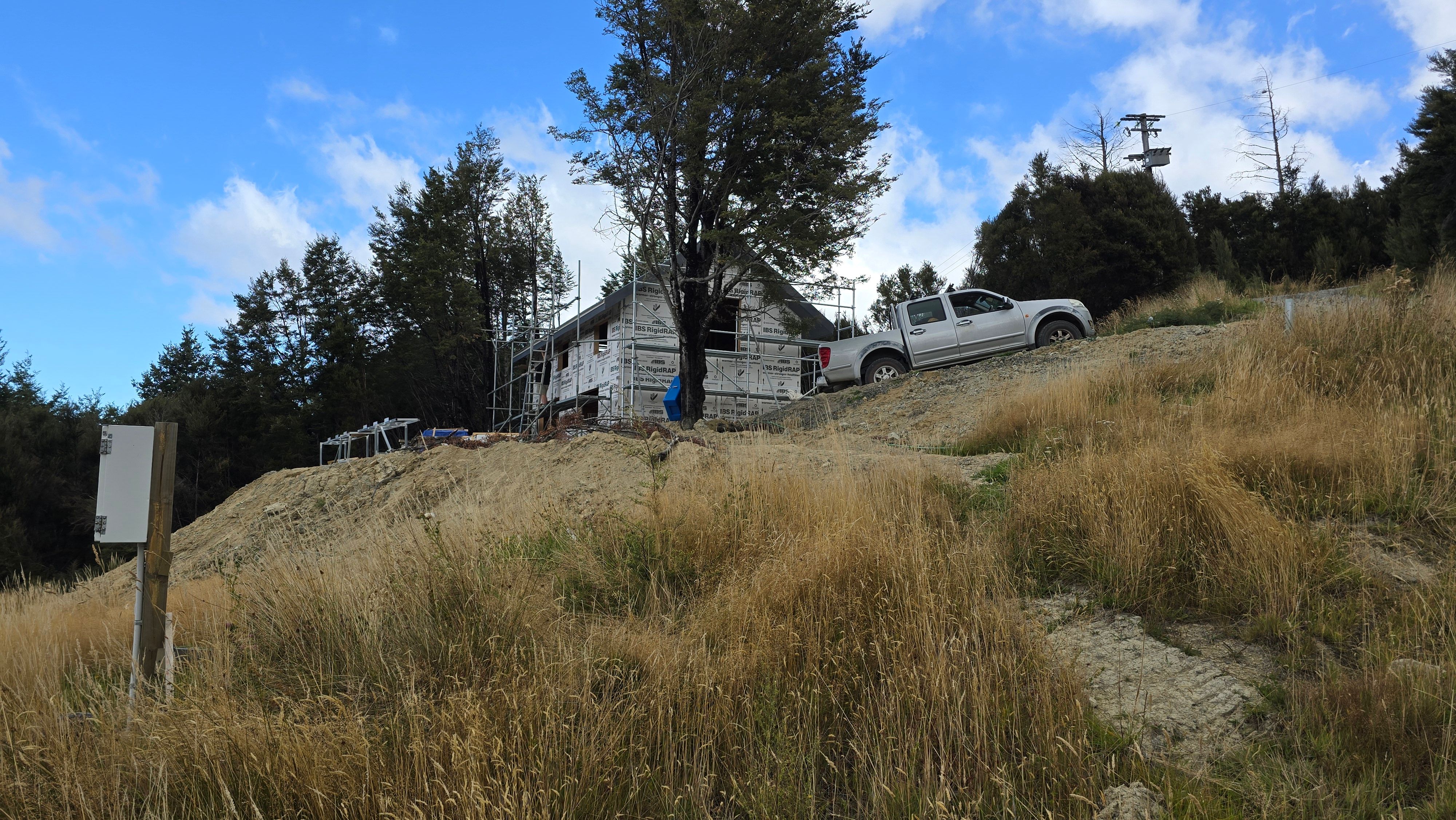New Build Guide: Component Steps From Planning to Post-Completion
Introduction
Building a new home in New Zealand is an exciting journey, filled with numerous opportunities to express personal taste and live the Kiwi dream. This process, however, requires careful planning and understanding of the New Zealand new build landscape. From selecting a prime location and designing your dream home to navigating council restrictions and obtaining necessary consents, each step is crucial for a successful project.
Essentially, the home building process in NZ is not just about constructing a physical structure. It's about creating a space that speaks to your lifestyle, supports your wellbeing, and respects the unique environmental and cultural heritage of Aotearoa.
As Kiwis, it's key to remember that our homes are more than just four walls and a roof. They are our sanctuaries and our biggest investments. So, whether you're a first-time buyer or an experienced investor looking to embark on this journey, this guide will provide you with comprehensive insights into the process, from planning to post-completion.
Let's dive into the intricate steps involved in this rewarding venture - because nothing beats the satisfaction of turning the key in your very own front door for the first time.
A. Researching Potential Locations and Understanding Land Zoning Regulations
Building a new home in New Zealand is an exciting journey that begins with the crucial step of finding an ideal location. The diverse New Zealand new build locations range from vibrant cityscapes to peaceful countryside settings, each with unique offerings for prospective homeowners. To make an informed decision, it's critical to understand the intricacies of site selection and the intricacies of land zoning regulations NZ.
Identifying Your Ideal Location
The process of locating your future home is about more than just being captivated by a picturesque view. It necessitates a strategic approach that considers multiple aspects:
Proximity to Amenities
Your day-to-day comfort and convenience will largely depend on the proximity of essential amenities to your home. These include:
- Schools: If you have school-age children or plan to have kids, the availability and quality of nearby schools should be a prime consideration.
- Healthcare facilities: Easy access to hospitals and clinics can provide peace of mind for your family's health needs.
- Retail outlets: Daily necessities like supermarkets, pharmacies, and other shops should ideally be within a short distance.
- Public transport: Good public transportation links are vital if your family relies on this mode of transport.
Community and Lifestyle
The community vibe and lifestyle opportunities offered by an area can significantly affect your overall living experience. Consider factors such as:
- Safety: Check crime rates and safety statistics for the area.
- Recreation: Look for parks, gyms, clubs, or other recreational facilities that align with your interests.
- Social scene: Evaluate the social atmosphere - whether it's bustling or tranquil - and how it resonates with your lifestyle.
Future Development Plans
Understanding the future direction of an area can help anticipate changes that could impact your lifestyle or property value. This may involve:
- Planned infrastructure projects such as roads, schools, or hospitals.
- Upcoming housing or commercial developments.
- Environmental conservation plans.
To facilitate your research, leverage useful tools like online property portals including realtor.co.nz. These platforms provide a wealth of information about various regions, from current property prices to neighbourhood demographics. Additionally, local council websites often publish development strategies and future planning documents, providing a glimpse into potential changes to the area. Armed with this knowledge, you'll be well-prepared to make an informed decision on your ideal location.
Delving into Land Zoning Regulations
Land zones are categories assigned to parcels of land that dictate permissible activities and developments. In New Zealand, understanding these regulations is critical as they directly impact what you can build:
- Residential Zones: Typically allow for a range of housing types while controlling density and height.
- Commercial Zones: Geared towards business and retail uses, often with specific provisions for mixed-use developments.
- Rural Zones: Focus on preserving the rural character and primary production activities, with more stringent controls on residential development.
- Special Purpose Zones: Include areas like airports or universities where specified activities are central.
To grasp the implications of land zones for construction:
- Review the District Plan: Each local council has a District Plan available online detailing zoning rules specific to their jurisdiction.
- Attend Planning Consultations: Engage with council planning officers or professional consultants to understand how zoning applies to your prospective land parcel.
Implications for Construction
Zoning laws influence many facets of building design including:
- Building Height and Footprint: Zoning dictates how tall buildings can be and how much of the land they can cover.
- Setbacks: Rules about how far a structure must be set back from property boundaries.
- Environmental Impact: Requirements for managing effects on landscapes, ecosystems, or heritage sites.
By conscientiously examining New Zealand new build locations and comprehending land zoning regulations, prospective homeowners lay a robust groundwork for their upcoming projects. This approach ensures alignment between one's vision for their home and the practicalities imposed by regulatory frameworks.
As you continue your property journey, remember that thorough research at this stage paves the way for smoother steps ahead. With clarity on location and zoning secured, you’re well-positioned to forge onwards—delving next into acquiring land while remaining mindful of local council restrictions and regulatory nuances that await.
B. The Art of Land Acquisition: Navigating Local Council Restrictions for New Builds in NZ
When it comes to buying land for a new build in NZ, the process involves more than just choosing the right location. A crucial part of this process entails understanding local council restrictions and the legalities surrounding land acquisition. This may seem daunting, but with a clear plan and the right information, you can navigate these complexities with ease.
Unravelling the Intricacies of Easements and Covenants
In real estate jargon, two terms you'll come across quite often are 'easements' and 'covenants.' These are legal mechanisms that can significantly influence your property rights.
Easements grant others certain rights over your property, such as access for maintaining utility lines or drainage systems. These can impact where you can construct your building and how you can use your land.
On the flip side, covenants impose certain conditions on how you can use your property. They may restrict the type of construction permitted or even dictate specific architectural styles.
To navigate these potential hurdles:
- Ask for a copy of the title deed, which should list any easements or covenants tied to the property
- Scrutinise these documents carefully; don't hesitate to seek legal advice if needed
- Reflect on whether these conditions align with your intended use of the land
Deciphering Legal Policies: The Role of The Resource Management Act
New Zealand's Resource Management Act (RMA) plays a vital role in managing environmental resources. It sets national guidelines for issues like noise control, water quality, and air pollution that could impact your construction plans.
Interesting Fact: The RMA is slated for replacement by three new laws: Natural and Built Environments Act, Strategic Planning Act, and Climate Adaptation Act. Staying abreast of these changes is crucial to ensure your project remains compliant with the evolving legislation.
To successfully navigate the RMA:
- Familiarise yourself with the act's sections that may influence your project
- If legal jargon isn't your forte, consider seeking professional advice
- Make sure your construction plan aligns with RMA stipulations to preclude future complications
C. Understanding Local Council Restrictions Beyond National Legislation
Beyond national laws like the RMA, local councils often enforce additional restrictions. These could encompass heritage protection rules, tree protection orders, or flood management requirements, among others.
To stay ahead of potential curveballs:
- Review the district plan to identify any special conditions applying to your land
- Engage in discussions with the local council to clarify any uncertainties
- Incorporate these constraints into your initial construction plan, rather than facing last-minute adjustments
Purchasing land for a new build goes beyond finding an idyllic location—it requires a deep understanding of local council restrictions and pertinent legalities. With this knowledge in hand, you can confidently embark on your land acquisition adventure and lay a solid foundation for your upcoming construction project.
Ensuring Site Suitability: LIM Reports and Geotechnical Soil Investigations
When embarking on a new build in New Zealand, it's more than just envisioning your dream home. It involves meticulous due diligence to confirm the suitability of the land for your project. At the heart of this process are two key aspects: acquiring LIM reports NZ and conducting geotechnical soil investigations in New Zealand.
The Crucial Role of LIM Reports in Assessing Property Information and Potential Risks
LIM (Land Information Memorandum) reports are a vital resource for potential property owners. They provide an exhaustive snapshot of a property, incorporating data held by local council that could impact your build or future use of the site.
A typical LIM report includes crucial details such as:
- Historical permits and consents granted for the property
- Zoning rules and land use limitations
- Recorded natural hazards like flood plains or earthquake fault lines
- Existence of any protected buildings or trees on the site
Before finalizing a land purchase, it's crucial that you thoroughly review the LIM report. This step ensures you're fully aware of any potential challenges that could affect your construction plans—be it drainage issues or legal obligations to preserve certain features of the land.
The Importance of Conducting Thorough Geotechnical Assessments
Geotechnical soil investigations take an even deeper dive—literally—into the land beneath a potential construction site. They evaluate soil stability and other subsurface conditions that could impact foundation requirements. These investigations offer insights into several key areas, including:
- Soil composition and its strength
- Groundwater conditions
- The risk of soil liquefaction during seismic events
- Recommendations regarding foundation type and depth
A geotechnical report is not simply an assessment—it's a significant guide that influences numerous decisions about your build, from design considerations to the selection of suitable construction materials.
Engaging Expert Professionals
Enlisting experienced professionals to conduct these investigations is paramount. For LIM reports, your first point of contact should be your local council; they typically offer this service for a nominal fee. In terms of geotechnical soil investigations, seek out reputable firms with a proven track record of working on comparable projects in your chosen area.
Deciphering Reports and Planning Your Next Steps
While these reports can be complex, you don't have to navigate them alone. Architects, builders, and engineers can provide valuable expertise to help interpret the findings and adjust plans accordingly. If significant issues are uncovered during these investigations—such as unstable ground necessitating extensive foundation work—you may need to reconsider your building plans or budget for additional expenses.
By meticulously assessing the data provided by LIM reports and geotechnical soil investigations, you equip yourself with the knowledge required to make informed decisions about your new build project. These steps not only safeguard your investment but also contribute towards creating a safe and lasting home.
Ensuring site suitability through comprehensive reporting lays the groundwork for a successful construction process—one where unforeseen complications are mitigated because you've taken proactive measures right from the outset.
D. Collaborative Creation with a Qualified Architect or Draughtsperson for Innovative Designs
In the journey of crafting your dream home, a pivotal stage is the design phase. It's during this time that your abstract ideas begin evolving into tangible plans and sketches. Engaging with a proficient professional like an architect or draughtsperson becomes indispensable to translate your vision into functional and innovative designs that match your expectations.
The Importance of Choosing the Right Professionals
The decision to employ an experienced architect for new build NZ projects can be a game-changer in the realisation of your dream home. These consummate professionals excel at comprehending your lifestyle needs, aesthetic inclinations, and budget constraints to conceive a design that harmonises all these factors.
While selecting an architect, certain aspects deserve keen attention. Consider their portfolio of past projects, feedback from previous clients, and their unique designing style. An ideal architect not only provides inventive solutions but also has the foresight to envisage potential construction obstacles based on their extensive knowledge in design.
Prioritizing Sustainability in Design
In line with global trends, a growing number of New Zealanders are now prioritizing sustainability in their building ventures. A well-informed architect can guide you in integrating eco-friendly materials and energy-efficient systems right from the inception of the design process. This conscientious approach not only lessens your environmental footprint but also paves the way for long-term cost savings on energy expenses.
"Architects play a pivotal role in advocating sustainability by creating homes that co-exist harmoniously with nature while still offering modern comforts."
Incorporating Cultural Elements in Design
New Zealand's vibrant heritage is deeply influenced by Māori culture. If it aligns with your project's vision, you may contemplate including elements of Māori architecture in your design. This could entail modern interpretations of traditional patterns or adopting construction methods inspired by ancient Māori edifices.
"Weaving Māori cultural elements into modern designs is a way of paying homage to New Zealand's indigenous heritage while infusing unique beauty into your home."
The Outcome: Innovative Designs in New Zealand Architecture
The collaboration with an architect culminates in a design that mirrors your individuality and integrates professional insights. This ensures the crafted design is not just visually captivating but also functional, sustainable, and culturally sensitive if required.
Engaging an architect for your new build project in New Zealand can significantly enhance the final product. Their expertise and experience streamline the process and result in innovative designs that make a mark in New Zealand architecture.
As you transition to the next phase of your new build journey, you'll delve deeper into specifics of design concepts, cost estimation, and building specifications. Remember, every meticulous step taken brings you one stride closer to the home you've envisioned.
E. Nailing Down the Details: Design Concepts, Quantity Surveying, and Specifications
Once your initial ideas have taken shape in the hands of your skilled architect or draughtsperson, it's time to delve deeper into the specifics. This critical stage demands a meticulous analysis of the design concepts for new build NZ, a comprehensive financial overview with the aid of a seasoned quantity surveyor NZ, and a rigorous examination of the building specifications in New Zealand.
Honing Your Design Concepts
The design concept serves as the mainstay that steers the aesthetic allure, practical functionality, and operational efficiency of your future home. It transcends superficial decisions like selecting wall paints or kitchen layouts; it urges you to deliberate on how you envision each space to feel and function.
To fine-tune your design preferences:
- Commence by distinguishing between your needs and wants
- Draw inspiration from diverse sources such as interior decor magazines, architecture websites or showhomes
- Cultivate a mood board to amalgamate your thoughts and ideas
- Contemplate over factors like natural light access, seamless indoor-outdoor transition, innovative storage solutions and privacy aspects
It's vital to remember that your design goals should harmonise with your budgetary constraints. Striking this equilibrium early on can potentially shield you from exorbitant alterations during the construction phase.
"Balancing design aspirations with budgetary realities is key to successful project execution."
The Role of a Quantity Surveyor
A Quantity Surveyor (QS) is an indispensable asset in the construction industry, specializing in forecasting the expenses associated with building projects. Their role is instrumental in cost management throughout your project's lifecycle.
Involving a QS at an early stage ensures that:
- Your designs don't overshoot your budget
- You possess a detailed cost breakdown for transparency
- You can efficiently track expenses during the construction phase
A QS prepares an initial cost estimate based on your architectural blueprints, enabling you to tweak designs if they exceed your budget. They are also entrusted with formulating tender documents for contractors and managing contracts to ensure that costs remain within the agreed budget.
Reviewing Building Specifications
Building specifications are comprehensive documents that delineate the materials to be used, the standards of workmanship expected, and the construction methodologies to be followed for your new build project. They function as a roadmap for builders and should be scrutinised meticulously to:
- Verify that all details coincide with your expectations
- Comprehend what is included in the contract price
- Spot any potential issues or omissions before they become problems
In New Zealand, building specifications are legally binding documents and constitute part of your building contract. It's vital to ascertain they comply with the NZ Building Code stipulations and local council regulations.
Once you're content that your design, budget, and specifications are aligned and accurately represent your vision, you're prepared to advance to the next step - securing consents for your project. This process necessitates interaction with local councils and a thorough understanding of the Resource Management Act - aspects we'll delve deeper into in our next section.
This stage is all about refining your vision, ensuring its financial viability, and establishing clear expectations for the construction process. With meticulous attention to detail, you will have a robust plan in place that will seamlessly guide you through the subsequent stages of your new build journey.
F. From Paper to Reality: Resource Consent, Building Consent, and Construction Insurance
The Journey Through Consents
The path from architectural design concepts to a tangible structure is filled with challenges. An important juncture in this journey is the consent process which commences before any physical construction activity begins.
Understanding Resource Consent NZ Requirements
Resource consent is essential when your proposed construction project does not adhere to the regulations specified in your local council's district plan. These rules, governed by the Resource Management Act (RMA), manage the usage of natural and physical resources in New Zealand and cover aspects such as building height, site coverage, and distance from boundaries.
To navigate the resource consent process efficiently, follow these steps:
- Research the District Plan: Acquaint yourself with your local council's district plan and its specific regulations.
- Assemble documentation: Compile all necessary documents including detailed site plans, architectural drawings, an Assessment of Environmental Effects (AEE), and other pertinent reports.
- Lodge your application: Submit all relevant information to your local council for assessment.
It's crucial to note that each resource consent application can significantly vary based on factors like project location, scale, and type of activity involved.
Navigating the Building Consent Process in New Zealand
Post resource consent, you'll need to secure building consent. This ensures your planned works comply with the Building Code, a set of performance standards that regulate structure integrity, fire safety, accessibility, moisture control, durability among others.
Here's how to approach this consent:
- Organise your application: Gather required documents such as architectural plans, engineering calculations, specifications, and product data.
- File your application: Submit these documents along with necessary fees to your local council.
- Wait for approval: The council will assess your application and may request further information if required.
- Obtain building consent: Upon approval, you will receive your building consent, granting permission to commence construction.
Bear in mind that council inspections will be conducted at various stages of construction to confirm compliance with the approved plans.
Mitigating Risks with Construction Insurance
While obtaining consents might seem like a substantial task, it's just one part of the broader project management process. Another vital component during this phase is risk management, which includes securing construction insurance for NZ new builds.
Construction insurance safeguards you against unforeseen circumstances that might disrupt the construction process, covering potential accidental damages, theft of materials or equipment on site, and possible legal liabilities.
Consider these types of insurance for your new build:
- Contract Works Insurance: This policy covers physical loss or damage to the works during the construction phase.
- Public Liability Insurance: It provides coverage if a third party makes claims against you for property damage or bodily injury caused by your construction activities.
- Professional Indemnity Insurance: This is important if you're employing design-and-build contractors as it offers coverage should their professional advice or services result in a financial loss.
Transitioning from paper to reality involves successfully traversing through resource and building consent processes while ensuring adequate construction insurance coverage. Each step requires time, a comprehensive understanding of regulations, and meticulous attention to detail.
G. Putting it All Together: Construction Phase and Key Stakeholders
When transitioning from the planning phase to the actual construction of your new home, it's crucial to understand the key roles involved. A pivotal figure in this process is a Licensed Building Practitioner (LBP). In New Zealand, an LBP plays an indispensable role in maintaining quality standards and ensuring regulatory compliance.
The Role of a Licensed Building Practitioner
An LBP in NZ holds the responsibility of overseeing and certifying important aspects of the building work. They ensure that all work adheres to the Building Code and that every step aligns with your approved plans. For instance, LBPs check that foundation work, structural elements, roofing installations, and external moisture management systems meet or exceed the code requirements.
Yet, their role extends beyond mere oversight. LBPs can also provide invaluable advice on material choices, construction methods, and potential design improvements during the build process. Their expertise can help prevent costly mistakes while enhancing the longevity and functionality of your home.
Collaboration: The Key to Success
The construction phase is akin to a well-orchestrated performance where each stakeholder has a unique part to play. This stage involves multiple players working together towards a common goal - transforming your dream home into reality.
Builders
Builders are at the heart of this operation, translating architectural drawings into tangible structures. Selecting a reputable builder who shares your vision and understands your expectations is paramount.
Subcontractors
Subcontractors specialise in specific areas such as plumbing, electrical work, heating systems or painting. The builder usually oversees their work but it's essential for you as a homeowner to maintain open lines of communication with them.
Suppliers
Suppliers provide necessary materials for construction. When selecting suppliers, consider not only cost but also factors like material quality and delivery timelines.
Collaboration goes beyond mere interactions among these stakeholders. It's about fostering a team spirit where everyone contributes towards the project success. Regular site meetings, transparency in decision-making, and addressing concerns promptly can go a long way in ensuring a smooth construction process.
Managing the Construction Phase
The construction phase of a new build can be an exhilarating yet challenging time. Here are some tips to navigate this stage effectively:
- Stay Involved: Regularly visit the site to monitor progress and address any issues promptly.
- Keep Records: Document all decisions, changes, and agreements in writing.
- Communicate Effectively: Ensure clear communication between you and all parties involved in the construction.
- Be Proactive: Don't hesitate to ask questions or raise concerns about any aspect of the build.
Remember, building a new home is not just about erecting walls and laying roofs. It's about crafting spaces that resonate with your lifestyle and aspirations. With the right team by your side, you can enjoy the journey as much as the destination - your dream home.
H. Adding the Finishing Touches: Interior Design, Landscaping, and Sustainability Features
Creating a new home in New Zealand is a journey that goes beyond the final nail or coat of paint. It's about infusing life into your residential structure with thoughtfully chosen interior design elements, landscaping features, and sustainability integrations. These aspects contribute to personalising your living space, enhancing its aesthetic appeal, and promoting environmental stewardship.
Aesthetic Interiors for Your Personal Style
Your personal style forms the underpinning of the interior design choices for your NZ home. It's not just about selecting stylish furniture or picking trendy paint colours. The art lies in integrating your individual preferences and lifestyle requisites into every nook and corner of your house.
For instance, if culinary adventures are an integral part of your life, consider designing an open plan kitchen equipped with premium appliances and sufficient storage space. If you're an art aficionado, allocate considerable wall space for showcasing your prized collection.
Furthermore, it's vital to consider natural light sources when planning room layouts. Position living areas where they can benefit from abundant daylight to create warm and inviting spaces.
Engaging a professional interior designer can prove helpful in this phase. Their expertise can guide you away from common design mistakes while ensuring your vision translates accurately into reality.
Preserving Native Flora and Fauna
Landscaping is another significant aspect that contributes to the overall charm and functionality of your new home. The focus here isn't solely on aesthetic enhancement but also on preserving New Zealand's unique biodiversity.
When conceiving landscaping strategies for your new build, give thought to incorporating native plants that thrive in local climatic conditions and support local wildlife habitat. Go beyond traditional grassy lawns; envisage a backyard sanctuary dotted with native ferns or flaxes. If space allows, you could even plant a Pōhutukawa tree, New Zealand's Christmas tree!
A professional landscaper can be instrumental in crafting outdoor spaces that complement your home's architectural style while promoting NZ's rich natural heritage.
Building for Long-Term Sustainability
Building a new home is a golden opportunity to prioritise sustainability right from the onset. This approach not only minimises environmental impact but can also lead to significant savings in energy costs over the years.
Sustainability features for NZ houses can encompass a broad array of elements. Some effective measures include:
- Opting for high-quality insulation and double-glazed windows to minimise heating and cooling requirements.
- Installing solar panels or a solar water heater to leverage New Zealand's abundant solar resource.
- Fitting low-flow fixtures and rainwater collection systems to optimise water usage.
- Choosing energy-efficient appliances and LED lighting to reduce electricity consumption.
Engaging a Green Building Professional can offer valuable insights into the most suitable sustainability solutions for your specific needs.
By weaving together interiors that echo your personal style, landscaping that respects New Zealand's endemic flora and fauna, and sustainable systems, you're not merely constructing a house; you're moulding a home. A home that mirrors your individuality, contributes positively to the environment, and is primed for long-term sustainability. This holistic approach ensures your new build stands as a testament to meticulous planning, thoughtful design, and respect for Aotearoa's unique environment.
I. The Indispensable Phase: Final Inspections, Defect Rectification, and Code Compliance
Navigating the home building journey in New Zealand is an exciting venture. As you inch closer to the finish line, it's critical not to overlook one of the most essential steps: undertaking final inspections for NZ new builds and rectifying defects promptly. This phase is instrumental in assuring that your newly constructed home meets the highest quality standards while adhering strictly to New Zealand's building regulations.
The Imperative of Rigorous Inspections
Every nook and cranny of your home, from its structural integrity down to its electrical systems and finishing touches, requires meticulous examination. Frequent inspections, conducted at varying construction stages, function as crucial checkpoints in the building process.
- Pre-line Inspection: This inspection occurs before your walls are lined with plasterboard. It involves an in-depth review of insulation installation, plumbing and wiring systems, framing among other components. Building inspectors will ferret out any issues that could be concealed behind walls later on.
- Drainage Inspection: This verifies that all underground pipework has been correctly installed and is operating as intended.
- Final Building Inspection: This represents the last stage before securing your Code Compliance Certificate (CCC). The inspection ensures that all work aligns perfectly with the approved plans and building consent.
It's worth noting that these inspections serve a dual purpose: they validate the quality of work done and flag potential issues early enough. By addressing these concerns promptly, you can evade more substantial complications later on.
Tackling Defects and Non-compliance Issues Head-On
Despite meticulous planning and execution, defects may crop up. These could range from minor issues like a leaky faucet to significant structural problems. It's paramount to tackle these challenges head-on. Ideally, your builder should offer a defect rectification period (usually around 90 days post-completion) during which any identified defects will be repaired at no extra charge.
However, ensuring code compliance transcends rectifying visible defects. It signifies that every fragment of your home – from its base to its roof – complies with the New Zealand Building Code. To obtain your Code Compliance Certificate (CCC), your local council must be satisfied that the completed work aligns with the building consent.
Navigating Non-Compliance Scenarios
In instances where your build fails to meet the code, corrective action becomes necessary. This could range from minor tweaks to substantial rework. Only after these concerns have been addressed can a CCC be issued.
To evade non-compliance, it's vital that your builder comprehends and adheres to the approved plans and specifications throughout the construction phase. Regular communication and vigilant oversight can significantly mitigate the risk of non-compliance.
The process of conducting final inspections for NZ new builds and rectifying any defects or non-compliance issues is a pivotal step in your new build journey. It guarantees the excellence of your new dwelling and ensures it's a place where you'll feel safe, comfortable, and proud to call home.
J. The Moment You've Been Waiting For: Handover and Settling into Your New Home
The handover process for NZ new builds signifies the grand finale of your building journey, marking the transformation from a bustling construction site to your personal haven of comfort and warmth. This pivotal stage comes with a plethora of notable considerations, encompassing meticulous reviews of critical documentation, validation of warranties, and practical guidelines to help you navigate your new abode with ease.
Decoding the Handover Components
The handover stage is a nuanced process with several critical elements demanding your careful attention.
An Insightful Final Walk-Through
A detailed walk-through of your newly minted property should be scheduled with your builder. This is an excellent opportunity for you to ascertain if all the work has been executed in accordance with the agreed specifications. Any lingering issues can be identified and rectified before taking possession of your new home.
Comprehensive Documentation Review
During the handover stage, you will receive crucial legal documents such as the Certificate of Code Compliance and various warranty papers. It's important to thoroughly understand their content and implications. Also, remember to store these documents safely for future reference or in case any disputes arise.
Validation of Warranties
Warranties essentially cover repairs and replacements for certain aspects of your new home over a specified duration. Having a clear understanding of what components are covered under these warranties can save you from potential troubles in the future.
Ensuring a Smooth Transition to Your New Abode
Transitioning into a new home involves more than just unpacking boxes and arranging furniture. Here are some helpful tips that can make this transition smoother:
Acquaintance with Your Home
Take time to familiarise yourself with all aspects of your new dwelling, from comprehending how various systems like heating or air conditioning operate to knowing the location of important fixtures like the main water valve or the circuit breaker.
Setup of Essential Services
It's crucial to ensure that all essential services such as electricity, gas, internet, and water are functional by move-in day. This will make your initial days in the new place comfortable and stress-free.
Exploration of Your Neighbourhood
Make sure to explore your immediate surroundings. Identify important amenities in your neighbourhood like public transport routes, local grocery stores, schools or healthcare facilities.
The Joy of Celebration
Last but certainly not least, celebrate this monumental achievement! A small housewarming party with your friends and family can infuse a sense of joy and warmth into your new home.
Embarking on the journey of building a new home in New Zealand is a thrilling adventure. It brings along a fusion of anticipation and dreams gradually morphing into reality. As you transition into your new space, relish every moment, from the final walk-through to the delightful celebration marking your new beginning.
Despite the complex nature of this process, careful planning and understanding can convert it into a memorable journey. With the right guidance and a comprehensive NZ building guide, every step from planning to post-completion becomes more navigable. This article has walked you through these critical steps, mapping out the path that aligns with the unique New Zealand house construction timeline.
Prospective homeowners are advised to ponder over each phase of their build with diligence. The journey to create your dream home is lined with informed decisions, meticulous planning, and collaborative partnerships with professionals who prioritise quality and compliance at every step.
Remember these key actions at each stage:
- Research thoroughly to unravel the potential of your land
- Engage with professionals who can adeptly navigate legal landscapes
- Design innovatively while preserving cultural heritage and sustainability practices
- Build precisely, ensuring every detail mirrors perfection
And finally:
- Celebrate your transition into a space crafted distinctively for you.
Here is an example of the steps in chronological order:
Initial Planning and Consents
- Research potential locations and land zoning.
- Purchase land with consideration of local council restrictions.
- Obtain a LIM (Land Information Memorandum) report.
- Commission a geotechnical soil report for the site.
- Select a New Zealand-registered architect or draughtsperson.
- Develop initial design concepts, considering NZ's environmental conditions.
- Consult with a Quantity Surveyor for budget estimates.
- Finalise detailed house plans, including all specifications.
- Apply for Resource Consent if necessary (for land use or subdivision).
- Submit house plans and documentation for Building Consent.
- Engage a Licensed Building Practitioner (LBP) for the project.
- Secure construction insurance and liability cover.
- Arrange a construction loan or financing if required.
- Set up a detailed project timeline with milestones.
- Notify neighbours if the build affects them, following the Resource Management Act requirements.
- Prepare a site safety plan compliant with WorkSafe NZ standards.
- Establish temporary site facilities (toilets, fencing, storage).
- Order a portable construction power supply.
- Conduct a blessing ceremony of the site, if culturally appropriate.
- Clear the site of vegetation and debris in preparation for excavation.
Foundation and Framing
- Mark out the building's footprint on the ground.
- Excavate for foundation trenches or pilings.
- Install foundation footings and steel reinforcement.
- Pour concrete for footings and foundation walls.
- Install waterproofing to the foundation and basement areas.
- Lay plumbing and electrical groundwork within the foundation.
- Backfill around the foundation walls.
- Erect temporary bracing for construction safety.
- Frame the floor system, including beams and joists.
- Install the subfloor panels.
- Begin wall framing, marking stud locations.
- Erect external load-bearing walls.
- Frame internal partition walls.
- Install lintels over doors and windows in the framing.
- Frame the roof structure, including trusses and rafters.
- Apply roofing sarking or underlay.
- Install temporary roof cover if delays are expected.
- Frame out chimney and vent stacks.
- Conduct structural inspections of framing.
- Frame any decks, porches, or external structures.
- Waterproof the base of the external walls before cladding.
- Install temporary site lighting for security.
- Implement erosion and sediment control measures.
Exterior Works
- Select and install external cladding materials.
- Apply a breathable waterproof membrane to exterior walls.
- Install window and door flashings.
- Fit external windows and doors.
- Apply external insulation systems if used.
- Install the main roof covering (tiles, metal, other materials).
- Seal and waterproof roof junctions and penetrations.
- Install guttering and spouting, ensuring proper stormwater disposal.
- Complete any brickwork or exterior masonry.
- Apply the first coat of exterior paint or finish.
- Construct external features (decks, patios).
- Install external water taps and electrical outlets.
- Begin preliminary landscaping to stabilise the site.
- Install driveway and pathways.
- Erect fencing and gates as required.
- Conduct weathertightness checks on cladding and roofing.
- Install outdoor lighting fixtures and security systems.
Interior and Utilities
- Run internal plumbing pipework through walls and floors.
- Install home heating and cooling systems.
- Rough in electrical wiring, including switch and outlet boxes.
- Install internal ventilation ducts and units.
- Spray or place insulation in walls and ceilings.
- Install moisture barriers in wet areas.
- Hang plasterboard or drywall on walls and ceilings.
- Tape and finish drywall joints.
- Install underfloor heating elements where planned.
- Prime walls and ceilings for painting.
- Paint interior walls, ceilings, and trim.
- Install interior doors and hardware.
- Fit out closets and storage areas.
- Lay tile in bathrooms and kitchens.
- Install kitchen cabinetry and fixtures.
- Fit bathroom fixtures and accessories.
- Install countertops in kitchens and bathrooms.
- Lay carpet and other flooring.
- Install lighting fixtures and switches.
- Fit electrical outlets and faceplates.
Finishing Touches and Inspection
- Complete final painting and decorating.
- Clean windows and install treatments (blinds, curtains).
- Install final plumbing fixtures (sinks, toilets, showers).
- Conduct final electrical fit-off, including appliances.
- Install security and smoke detection systems.
- Complete any final interior touch-ups.
- Install shelving and fixed furniture.
- Conduct energy efficiency checks.
- Complete landscaping, including planting and outdoor structures.
- Install letterbox and house numbering.
- Arrange final inspections for Building Consent sign-off.
- Obtain the Code Compliance Certificate (CCC) from the council.
- Conduct a thorough builders clean of the interior and exterior.
- Review and compile all warranty documents and manuals.
- Hand over the project, including keys and security codes.
- Conduct a final walkthrough with the builder to identify any snags.
- Rectify any identified defects or issues.
- Establish a maintenance schedule for the home.
- Connect to the local waste and recycling collection services.
- Move in and arrange furniture and personal items.
Post-Completion
- Submit a change of address to relevant services (postal, electoral roll).
- Review and adjust property insurance coverage.
- Establish utility accounts (power, water, internet).
- Join the local neighbourhood support group.
- Introduce yourself to your new neighbours.
- Test all appliances and systems.
- Organise a maintenance check for six months post-completion.
- Plant a commemorative tree or garden feature.
- Create an emergency plan for the new home.
- Enjoy your new home, knowing you've navigated the comprehensive process of building in New Zealand with attention to every compulsory detail.
- Submit a change of address to relevant services (postal, electoral roll).
- Review and adjust property insurance coverage.
- Establish utility accounts (power, water, internet).
- Join the local neighbourhood support group.
- Introduce yourself to your new neighbours.
- Test all appliances and systems.
- Organise a maintenance check for six months post-completion.
- Plant a commemorative tree or garden feature.
- Create an emergency plan for the new home.
- Enjoy your new home, knowing you've navigated the comprehensive process of building in New Zealand with attention to every compulsory detail.
Keywords for Search:
new build guide nz, planning new home new zealand, new zealand home building process, selecting home locations nz, understanding nz land zoning, new build locations new zealand, navigating council restrictions nz, obtaining building consents nz, new zealand building landscape, designing dream home nz, kiwi home building essentials, environmental considerations new builds nz, cultural heritage in nz home design, new zealand building regulations, home sanctuary creation nz, nz building project planning, prime location selection nz, comprehensive new build insights nz, home building opportunities nz, building new home nz process, new zealand new build steps, planning to post-completion building nz, expressing personal taste in home nz, living the kiwi dream, constructing physical structures nz






